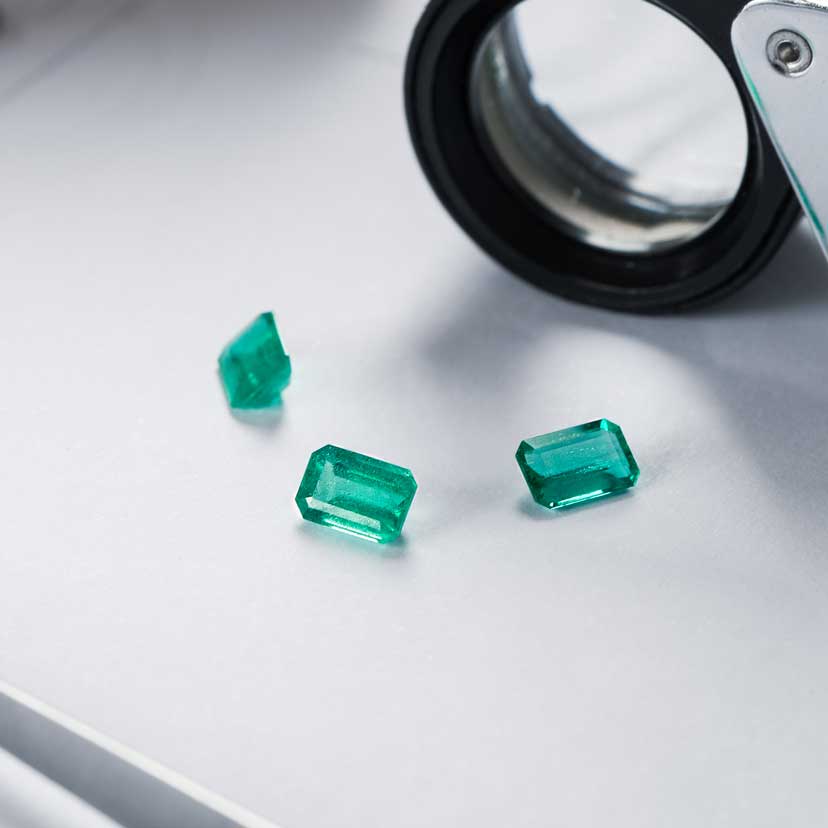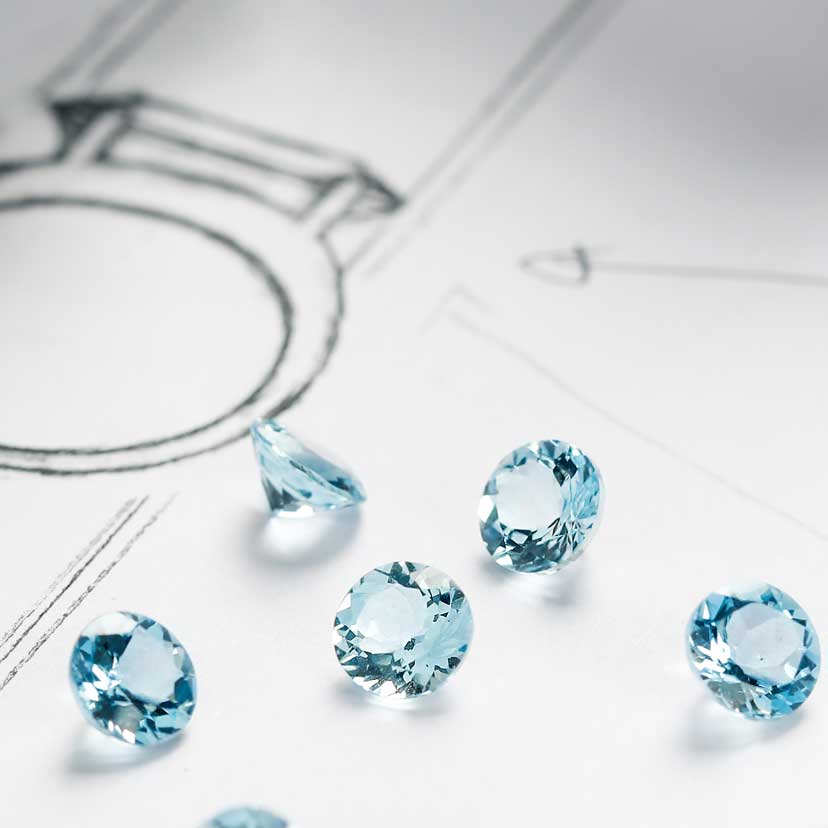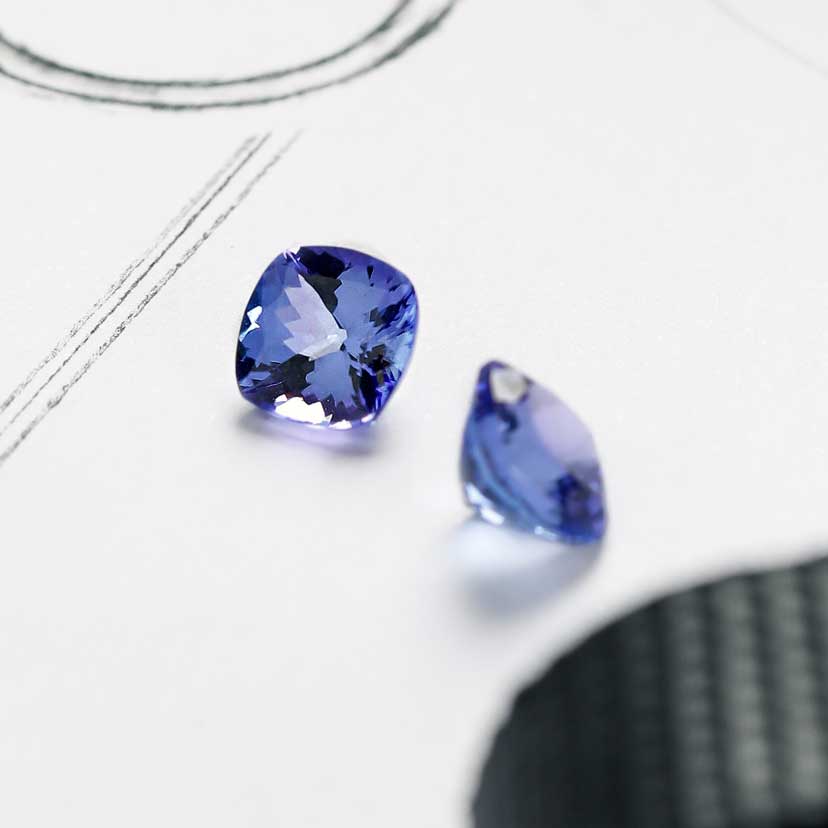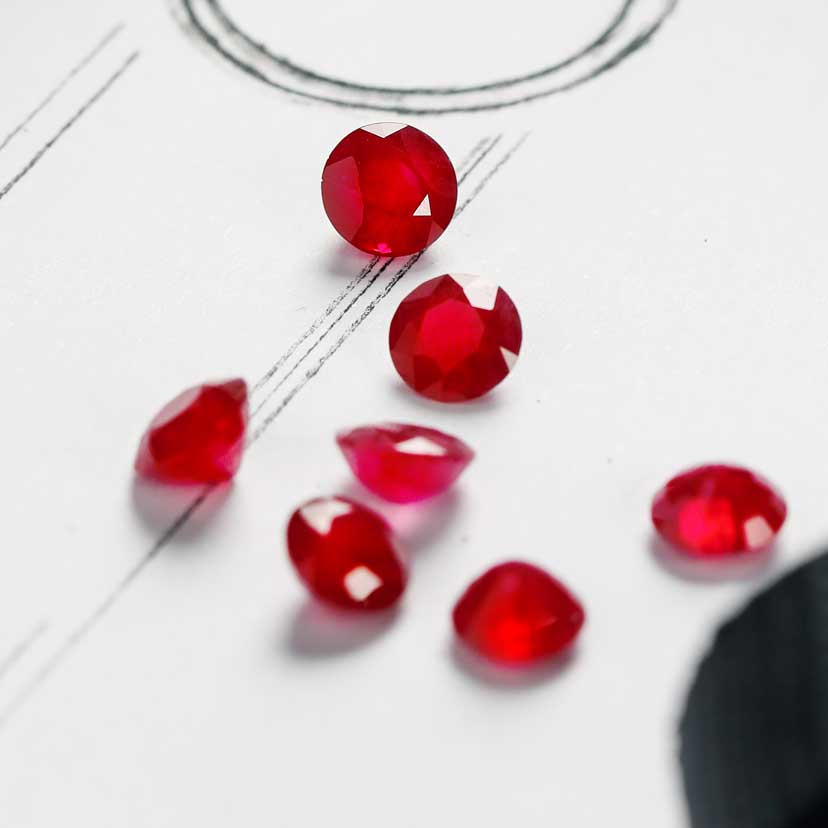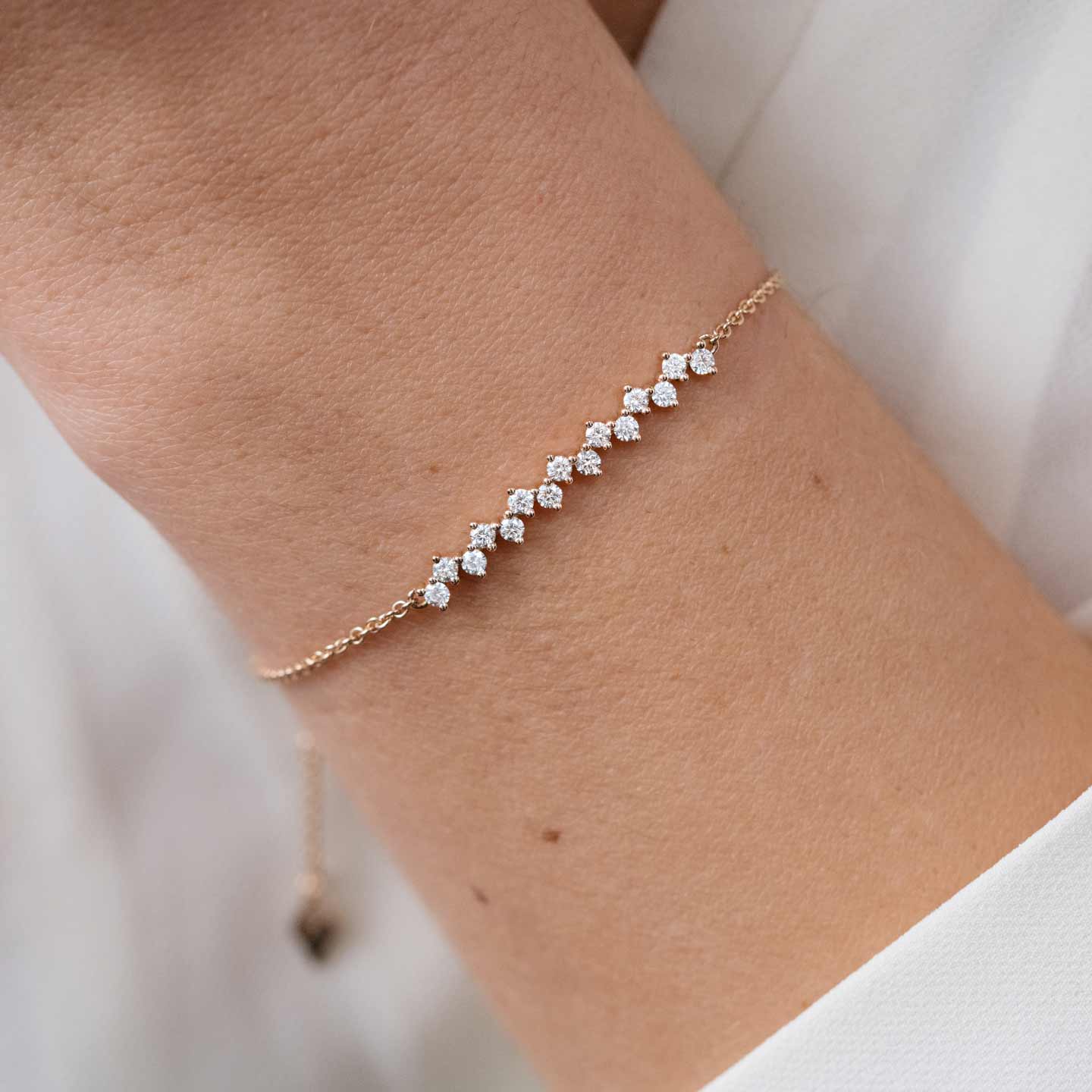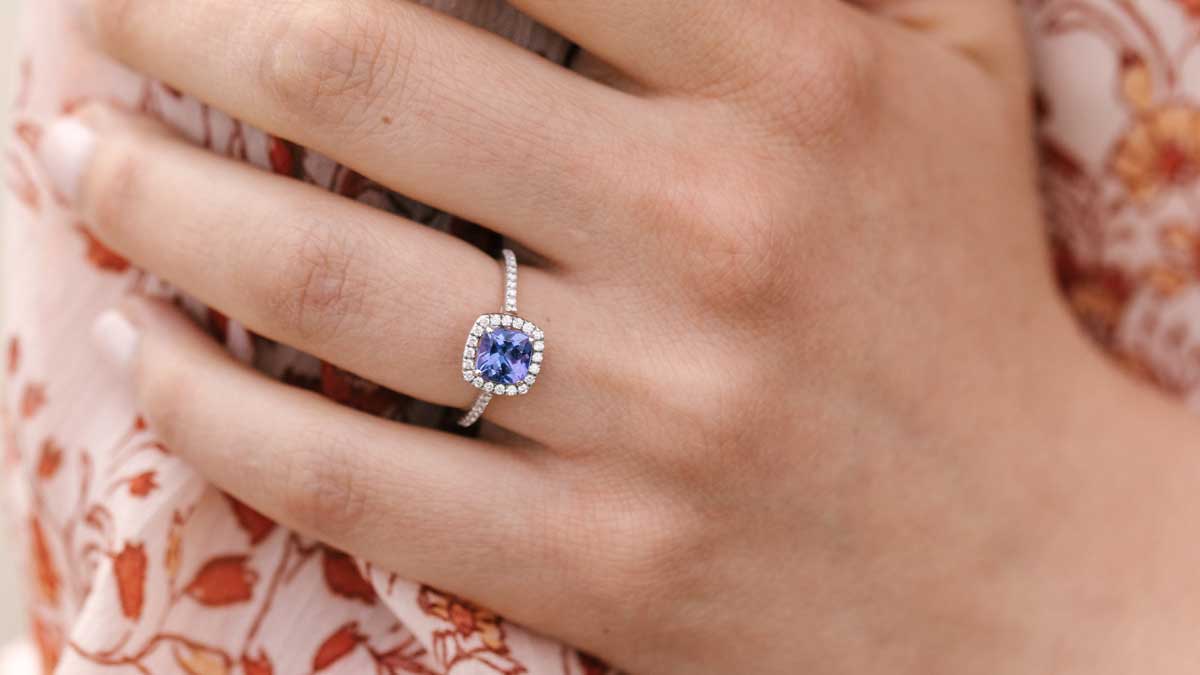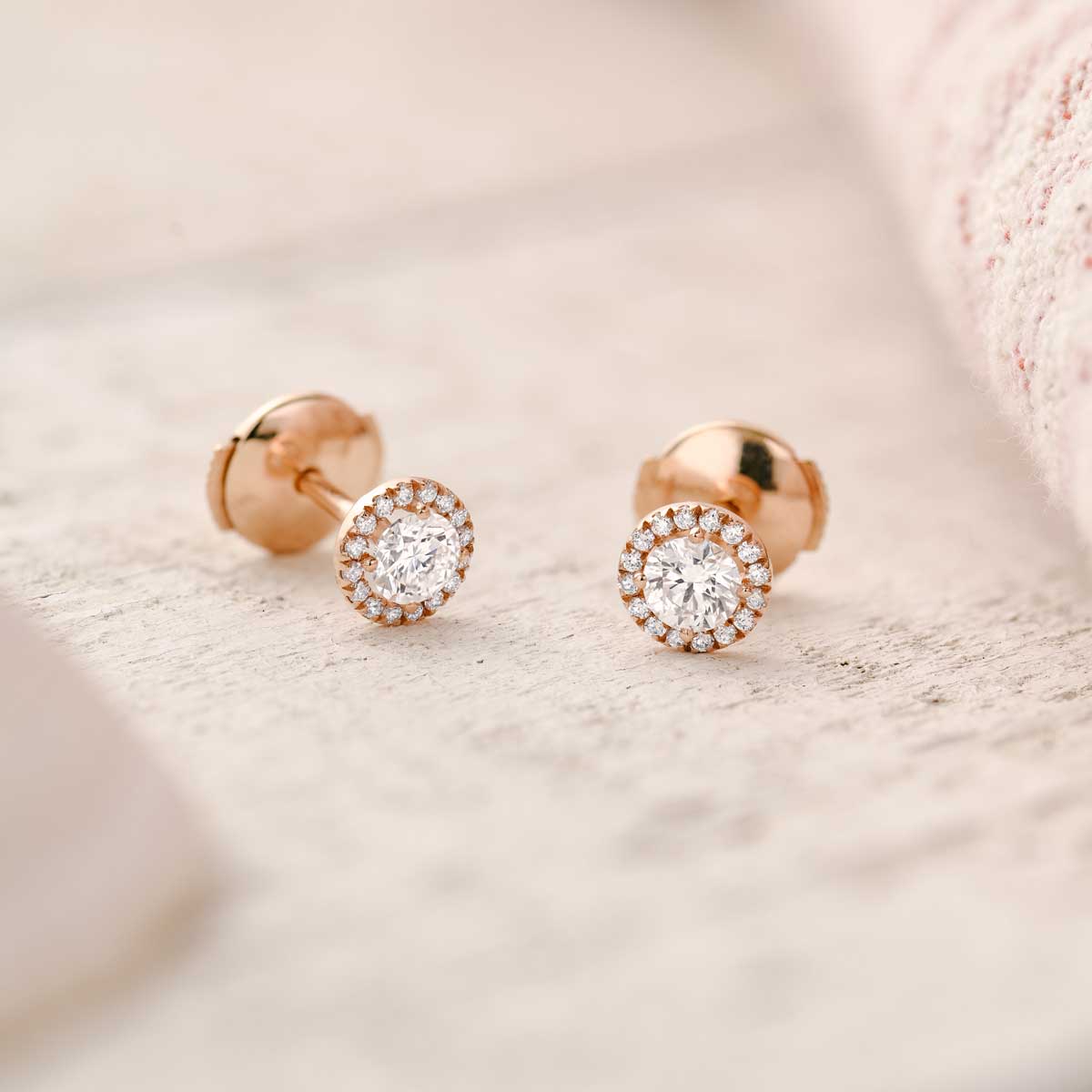A word from Elodie, our production manager
“ At Gemmyo, we all share the same passion for stones, we believe that they are the soul of a piece of jewelry!
With the help of our gemologists, we do our utmost to unearth the most beautiful stones from all over the world for your creations.
Over the past 10 years, we have developed a solid network of partners to guarantee you the best possible quality whilst giving you a wide range of possibilities to choose from. ”
Often when we think of a gemstone, we instinctively think of diamonds, sapphires and possibly rubies. In reality, there is a whole world behind these few evocative names...
But which stone should you choose for an engagement ring? For a gift? For your next piece of jewelry? Is this or that stone suitable for jewelry worn every day?
These are legitimate questions, as there is a wide variety of stones to choose from and it is not always easy to find your way around them. Often, we think we should know these things, that this world is meant for those initiated into it.
But that's no problem! We have decided to challenge this prejudice and open the doors of gemmology to you by sharing with you our guides to all the stones offered at Gemmyo.
Introduction to the art of gemmology
Before launching into the guides for each stone, let's start by reviewing a few notions that may be useful.
—— What is a precious or fine stone?
A precious or fine stone is first and foremost a gem, i.e. a mineral material, usually rock, but which can also be organic - such as amber or pearls.
A gem is called as such if the mineral is colorful and strong enough to survive everyday use - such as knocks and scratches.
A gem is originally what is known as a "rough", i.e. the mineral simply extracted from the ground and not yet worked.
This rough is then cut by a lapidary who has the task of faceting.
Did you know?
“ A lapidary is a term reserved for colorful stones; for diamonds, we call on a "diamantaire".
Indeed, diamonds require a specific cut, particularly because of how hard they are.
Please note: a lapidary - or "diamantaire" - refers to a craftsman who cuts stones, but also to the trader who sells them, and sometimes even both!
The faceting work carried out by the cutters is a crucial step in transforming a simple mineral, often misshapen and opaque, into a precious or fine stone.
Thanks to a precise and perfectly executed faceting, a stone will become very bright as the light will spread more easily. Conversely, a less precise cut will leave less room for light so the stone will be dull.
The cut stones are then sold via local independent traders or directly on a larger scale via international exchanges.
The world's most famous stone trading location is undoubtedly the city of Antwerp in Belgium, which handles more than half of the world's market for cut diamonds in circulation!
Antwerp against all odds
The Belgian city of Antwerp has been the diamond capital of the world since the 15th century, mainly because of its strategic location. In its center, four diamond exchanges are concentrated in 2.5 km² and together account for approximately 50 billion dollars per year. This unique district is mainly reserved for professional traders, cutters, dealers and jewelers.
Generally speaking, how are these stones purchased? Well, despite what one might think, the trading of stones is still done in a rather "archaic" way.
Very often, professionals negotiate just through conversation, stones are bought on a handshake, and most of the exchanges are done in total trust - and this often for astronomical amounts.
Among the stones used in jewelry, two groups can be distinguished:
a. Precious stones
Precious stones refer only to diamonds, sapphires, rubies and emeralds.
Why?
The term gemstones is actually only a historical name for these four famed stones. Contrary to popular belief, it has nothing to do with better quality or rarity - the rarest stone in the world is actually not a diamond
Note that the term gemstone has been officially repealed by legislation since 2002 but it remains a term embedded in popular culture and everyday language.
b. Fine or semi-precious stones
Semi-precious stones, also called - fine stones - are defined by a 1970 list from the Confédération Internationale de Bijouterie, Joaillerie, Orfèvrerie des diamants, perles et pierres, or CIBJO.
Fine stones include all stones - except the four precious stones - used in jewelry.
The term semi-precious stones can be interpreted as a pejorative term, but this is not true at all. It is again just a title and not an indication of a possible lower quality - that's why we use the term fine stone instead!
As you can see, gems are much more than just minerals!
Extracted from the four corners of the world, precious or fine stones have been sought after for thousands of years by all civilizations. Let's try to understand why...
—— Why are gemstones so sought after?
Nature's miracles
It all began about 4.6 billion years ago with the formation of our planet in a gigantic quantity of matter. From this chaos and from the very first developments, our planet was enriched with an immense quantity of minerals that were able to crystallize over time.
With the help of the movement of the tectonic plates - which notably formed the mountain ranges - this activity generated very specific conditions of pressure and temperature that served as a cradle and transport for the stones we find today.
Did you know?
It is estimated that the first diamonds were formed 3.3 billion years ago, and emeralds about 65 million years ago. These are the same stones that we find today in workshops
How are the colors of stones made?
The colors of the stones are linked to the contact of mineral impurities such as oxides, cobalt, iron or even chromium.
For example, the famous sapphire gets its color from iron and titanium, the ruby from chrome.
All colors are represented by the stones according to geological conditions, temperature or pressure. This is why the stones are often found in particular and restricted geographical areas such as the South American basin for emeralds or Asia and Australia for rubies.
Stones and people
Humankind has always been fascinated by stones. Very quickly associated with those in powerful positions, they were widespread from the Pharaohs to the Amerindians; the Persians even thought that the Earth was a gigantic sapphire whose reflections coloured the sky.
Very early on, they were used as amulets to chase away evil spirits or as talismans by certain ancient civilizations, which associated them with curative, spiritual or even magical properties.
A source of fascination since the dawn of time, some stones have left their mark on our history, such as the Cullinan diamond, the largest diamond ever discovered, weighing more than 3,000 carats (about 620 grams).
Discovered in 1905 in Pretoria, South Africa, it was presented to King Edward VII of the United Kingdom. Of its exceptional size, 105 stones were cut from the original rough, one of which is found on one of the famous British crown jewels.
We could also talk about the emblematic necklace of Marie-Antoinette, the cursed "Hope" diamond, the Pink Star, the most expensive diamond in the world, and many others!
Gemstones have crossed time, cultures and religions and are still today sources of wonder, dreams and lust. Why is that?
1. Beauty
The first element of the answer is their beauty - although this is a relatively subjective notion.
Generally, the visual aspect of a stone is obviously the first element sought after before all its technical characteristics, which ultimately take second place.
The beauty of a stone can be defined by its natural brilliance, a depth of color, a specific hue or even reflections... All natural stones are created by nature, so they are all unique... isn't that what we are looking for?
2. Rarity
The success of stones also comes from their rarity, since what is rare is valuable. Exclusivity is an integral part of why stones are so coveted.
Formed in the earth's mantle over millions of years, stones are shaped by nature and we are therefore limited by what nature provides.
Some gemstones are even very exclusive, for example:
Tanzanite is up to 1000 times rarer than diamond. It comes from a single deposit in the world of about 20 km².
Tsavorite is up to 200 times rarer than emerald, a stone already coveted for its rarity.
- And what to say of painite, which has only 25 known specimens.
3. Purity
The purity of precious or fine stones is defined by the presence or absence of inclusions: the fewer the inclusions, the purer the stone.
What is an inclusion?
An inclusion is a solid, liquid or gaseous foreign body that slips into the stone when it is formed.
Inclusions are totally natural, they are part of the identity of a stone and should not be seen as defects, they are what makes it unique!
Inclusions are an integral part of the composition of a stone, they are even called the life of the stone.
The best example of this aspect is in emeralds - called gardens - inclusions actually define the beauty of an emerald.
What do the inclusions of an emerald look like? A light white cloud like frost inside the stone... totally mesmerizing.
4. Hardness
One of the first characteristics you think of when you think of a stone is its hardness.
What does the hardness of a stone really mean? The hardness of a stone is defined by the capacity of a stone to scratch another. Here is an explanation.
In 1812, the mineralogist Friedrich Mohs invented the Mohs scale, which is the basis for all measurements of stone hardness in gemmology.
The principle of this scale is to compare the resistance of one material to another and to rank it out of 10 according to the results. To understand how it works, here are some very simplified examples:
Diamond can only be scratched by itself, so it is 10/10.
Sapphire can only be scratched by diamond, so it is 9/10.
Topaz can be scratched by sapphire and diamond, so it is 8/10.
To help you visualize what these numbers represent, by way of comparison, hardened steel has a hardness of 6.4/10 on this same scale.
The Mohs scale is one of the reference measurements for stones because it allows us to define and measure their resistance in a simple way and thus be able to compare different stones quickly.
Why is this important? Quite simply, the harder your stone is, the more it will be able to withstand scratches or shocks and is therefore ideal for a piece of jewelry worn on a daily basis.
This aspect of hardness is one of the elements that makes the diamond so prized because it is simply the most resistant mineral on our planet, it is unalterable, except by another diamond
5. Quality
A gemstone is sought after for its quality, but how is it really determined?
a. For colorful stones
The quality of colorful stones is defined by a rating system ranging from A to AAA.
This qualitative assessment is made by gemologists who give this grade according to a number of criteria. During this evaluation, color, cut, purity and weight (in carats) are considered to determine the rating.
At Gemmyo, we only offer colorful stones of AAA quality, i.e. the highest quality available!
Our little extra
In addition to this quality, we also offer so-called exceptional stones.
These exceptional stones represent a tiny fraction of what our gemologists are lucky enough to find. These are stones with a totally remarkable brilliance, purity and quality.
To give you an idea, in a sapphire for example, this quality represents less than 0.5% of the stones extracted in the world!
b. For diamonds
The quality of a diamond is defined by 4 precise points or also called 4 Cs:
The first for Carat: this is the unit of measurement for the weight of the stone, one carat is equal to 0.20 grams.
The second for Color: the closer a diamond is to pure white, the better its quality. Specialists use a scale from D (Exceptional White +) to Z (yellow shade).
The third is for Cut: the faceting of a diamond to reveal its brilliance.
And finally, the fourth for Clarity: the size, color and position of the inclusions in the stone. For a natural stone, an inclusion is inevitable. A diamond of perfect quality is qualified as IF (no inclusions visible with a x10 magnifying glass) then the inclusions become visible (with a x10 magnifying glass and then with the naked eye).
At Gemmyo, we go one step further, as all our diamonds over 0.3 carat are accompanied by a unique certificate issued by the GIA or the HRD in Antwerp. A true 5th C!
Find all the information in our diamond guide.
FAQs
—— "Where do your stones come from?"
We work with lapidaries and diamond dealers from all over the world!
Each of our stones has a particular origin. Remember, the birth of a stone can only occur in particular geological conditions and so the areas can be quite specific and are often concentrated by country.
Here is a summary table of the places of origin for the stones we offer:
| Precious stones | Chocolate and cognac diamond | Australia |
|---|---|---|
| Emerald | Brazil & Zambia | |
| Ruby | Thailand, Madagascar or Mozambique | |
| Sapphire | Thailand & Sri Lanka | |
| Blue grey sapphire | Madagascar | |
| Yellow sapphire | Sri Lanka | |
| Teal sapphire | Tanzania and Madagascar | |
| Green sapphire | Madagascar | |
| Fine stones | Aquamarine | Brazil |
| Chrysoberyl | ||
| Garnet | Madagascar | |
| Padparadscha or grey spinel | Birmanie | |
| Tanzanite | Kenya & Tanzanie | |
| Topaze “Blue London” | Brazil | |
| Tourmaline | ||
| Green tourmaline | ||
| Mint tourmaline | Congo and Nigeria | |
| Tsavorite | Kenya |
What about diamonds?
Like most of the major Maisons, our diamonds come directly from Antwerp from our local partners. It is very difficult to give the exact origin of a particular diamond but our partners work with cutters in India, a reference for this practice!
Find more details in our diamond guide.
—— "Are your stones treated?"
At Gemmyo, all our stones are natural!
It should be noted that the vast majority of colorful stones on the planet are heated.
What does this mean? Heating a stone is a process that has been used since the dawn of time on colorful stones in order to maintain the color, consolidate it or simply to make the stone more resistant.
Contrary to popular belief, unheated stones are extremely rare and unless it is stated or there is a specific certificate to prove it, it is unlikely that a stone is unheated. If you are told that it is an unheated sapphire, beware unless you have a certificate from an independent laboratory. An unheated stone with a beautiful intensity of color is so rare that its price is multiplied by 100.
Even if this process does not correspond to a particular treatment, it should not be confused with chemical treatments which are controlled by the State because they denature the stone.
Note : Only topaz is a stone systematically treated by irradiation. But don't worry, it is not radioactive
—— "Are your stones ethical?"
At Gemmyo, we make it a point of honor to maintain a high level of expertise and this also constitutes a requirement for our partners.
We have been working for many years with lapidaries and diamond dealers with whom we have total confidence.
These partners work with the greatest Maisons of the Place Vendôme. There is no room for half measures when it comes to respecting regulations - whether for stones or precious metals.
Historically, the stone that is most sensitive to this ethical issue is undoubtedly the diamond. Its particularity is obviously linked to its high value and many countries that mine it have little regard for working conditions.
In order to curb this phenomenon, the Kimberley Process was set up by governments, diamond professionals and civil organizations to ensure that diamonds do not come from conflict zones.
At Gemmyo, we work exclusively with diamond dealers who are signatories to the Kimberley Process.


















